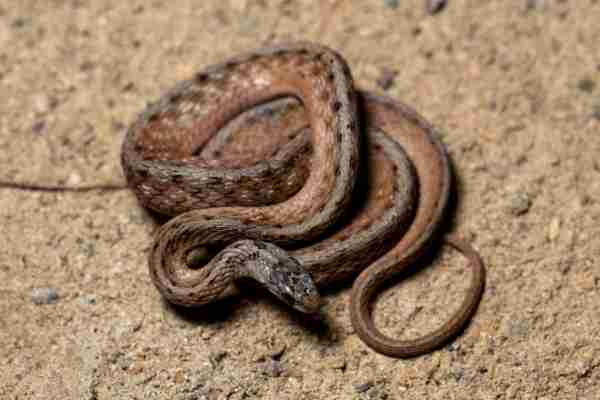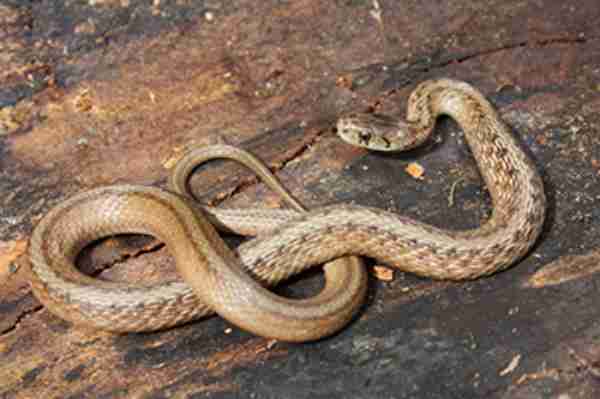Maryland is home to a diverse array of snake species, from the common garter snake to the rare timber rattlesnake. With over 40 species of snakes native to the state, there’s a good chance you’ll encounter one of these slithering creatures at some point. While most snakes are harmless, it’s important to be aware of which species are venomous and what to do if you’re bitten. In this article, we will discuss Dekay’s brown snake (non-venomous) that Inhabitat in Maryland.
The Dekay’s brown snake is a small, slender reptile that is found throughout the eastern United States. In Maryland, this snake is most often seen in wooded areas near streams or ponds. The Maryland brown snake is non-venomous and typically only grows to be about a foot long. These snakes are shy by nature and are not considered to be a threat to humans. If you do encounter a Dekay’s brown snake, it is best to leave it alone as they pose no danger to humans.

Table of Contents
Appearance
Brown snakes are slender snakes with smooth, glossy scales. The colouration of brown snakes can vary significantly, but they are typically some shade of brown, grey, or black. Some brown snakes may have yellow or white markings on their bellies. Dekay’s brown snakes are typically dark brown or black in colour with no conspicuous markings.
Habitat
In Maryland, this species can be found in a variety of habitats, including forests, fields, and wetlands. These snakes are most often seen in the spring and summer months when they are actively searching for food.
Diet
Dekay’s Brownsnakes primarily eat insects, such as beetles, caterpillars, and crickets. They will also eat other small invertebrates, such as earthworms and snails. In some cases, Dekay’s Brownsnakes have been known to eat small vertebrates, such as baby mice. When hunting, these snakes will use their sense of smell to track down their prey. Once they find their target, they will strike quickly and then swallow their prey whole.

Lifespan
Dekay’s brown snakes are typically shy and will not bite unless provoked. They are relatively easy to care for and can live 10-12 years in captivity. In the wild, their lifespan is shorter, averaging only 3-5 years.
Size & Weight:
Male and female brown snakes are similar in size, typically measuring between 10 and 13 inches in length. The average brown snake weighs between 4 and 6 grams. Dekay’s brown snakes are one of the smaller species of brown snakes, with some adults reaching a maximum length of just over 12 inches. Males tend to be slightly larger than females, but the difference in size is not usually significant

Predators
Dekay’s brown snake is preyed upon by a variety of animals, including birds of prey, raccoons, opossums, and skunks. In some areas, the snake is also hunted by humans. Although Dekay’s brown snake is not considered threatened or endangered, it is protected by law in some states.
Final Words
Dekay’s brown snakes are found throughout Maryland. They’re small, brown snakes that can reach up to two feet in length. They’re non-venomous and eat mainly insects, earthworms, and slugs. Dekay’s brown snakes are active during the day and prefer damp habitats like forests and fields. They’re often seen basking in the sun or hiding under rocks and logs. If you see a Dekay’s brown snake, be sure to give it plenty of space. These shy creatures will quickly coil up and flee if they feel threatened.
References:
https://dnr.maryland.gov/wildlife/Documents/Common-Snakes-of-Maryland-Photo-Guide.pdf
https://biomedicalsciences.unimelb.edu.au/departments/department-of-biochemistry-and-pharmacology/engage/avru/blog/our-venomous-neighbours-brown-snakes

Zahra Makda
Growing up enjoying the beauty of my village, a good passion for nature developed in me from childhood. Following my passion for the natural world, I have chosen zoology for my graduation, during my undergraduate degree, I participated in many nature trails, bird watching, rescues, training for wildlife conservation, workshop, and seminars on biodiversity. I have a keen interest in invertebrate biology, herpetology, and ornithology. Primary interests include studies on taxonomy, ecology, habitat and behavior.









